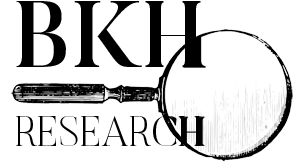Last month I saw a rerun of a British Antiques Roadshow from Belfast in January 2009. The camera that captured the Cottingley Fairies was the subject of one of the appraisals. The idea that two girls fooled Sir Arthur Conan Doyle was amusing and amazing to say the least. For those in America who had never heard of the Cottingley Fairies, there is a Wikipedia article and an OpenCulture article. For entertainment value, it was funny. What probably started out as a joke on their families, turned into a hoax when others were brought in and then the strain of lying about this was apparently very hard on the two cousins, Elsie Wright and Frances Griffiths. Some sixty years later they came clean and admitted to faking the photographs except their stories differed on the fifth photograph. Who knows what really happened and which girl’s story was true? I imagine after the passage of that much time, both girls believed their story was the true one. If two girls could hold a story that long under the scrutiny of Sir Arthur Conan Doyle in England, you can believe two cousins or sisters or friends in America could cover up the birth of an illegitimate child or an altered marriage date, the stories most confused in genealogical history.
Hoaxes aren’t new and genealogical and historical hoaxes have been around for centuries. Forging papers to get an inheritance, preparing fake Bible records to qualify for a federal pension for Revolutionary War service, creating false emails trails to support an alibi, faking invoices to establish a painting’s provenance, all have their impetus in fraud. In that light, The Historian as Detective: Essays on Evidence edited by Robin W. Winks published by Harper & Row in 1968 would be of interest to genealogists and historians alike.
The Internet has also introduced widespread dissemination of photoshopped images, which is good and bad. If the work done on Adobe photoshop or GIMP was to darken faded ink to increase legibility, how wonderful. (Adobe Photoshop is expensive, I use GIMP, it’s free.) In reality, people change photographs and documents to suit their own purposes.
What’s new is not that events are created or altered, but the ease and speed in which an event can be constructed and disseminated on the Internet. See Nancy Pelosi’s history altering photograph of 3 Jan. 2013. This photoshopped picture includes four women who weren’t there, see the highlighted section. As a researcher, that really, really bothers me. It creates evidence of events that didn’t happen. Yikes. I can imagine all those women waiting on the steps, cold and aggravated over the wasted time, and someone jokingly saying take it now, just photoshop the missing ones in later, we have to leave.
Pelosi’s comments of 4 Jan. 2013 are disturbing, when she tries to justify the lie rather than acknowledge a mistake and move on. Why on earth she didn’t just list the four missing women as absent, I will never understand. Yearbook committees have been doing it for a century. Instead she had the photo altered, posted it and then defended it. Historians and journalists across the country had to be cringing.
- I wonder if any of the historians and journalists, who were bothered by this, spoke up?
- I also wonder how many of the 57 women really in the photograph had family members who took a photograph at the same time of the women on the steps, showing who was really there?
- Fifty years from now, will they take those pictures to the Antiques Roadshow of 2063 and find they are worth some serious dollars because they weren’t doctored?
- What else on Pelosi’s flickr stream has been altered?
I don’t know if the fifth Cottingley Fairy photograph was taken by Elsie Wright or Frances Griffiths, I do believe it was a fake. I don’t know why the altered Pelosi photograph wasn’t removed and the original replaced online in the flickr stream with a notation about the four missing women. As a friend of mine frequently says, I don’t have a horse in that race. It doesn’t matter to me, I am not related, that I know of, to the English cousins or the women on the steps in the Pelosi photograph. I do know that these two events not quite a hundred years apart make me more sceptical of photographs than perhaps I should be. Neither started out as a hoax.
Historically neither story was true, but neither was invented as a hoax either. However, the ease in which that false information can be created, be put up on the Internet and copied around is pretty bad. Genealogically speaking we all want the lines we research to really be our lines. All of us have probably attached and worked a line that turned out to be untrue. Ancestry disseminates plenty of stuff that is wrong, misattributed or melded, but to purposefully put up false information is another thing altogether. It’s the difference between a mistake and a lie.
It all boils down to “check and recheck your work” especially for logic errors, but check and recheck someone else’s. It’s why it called RE Search.









